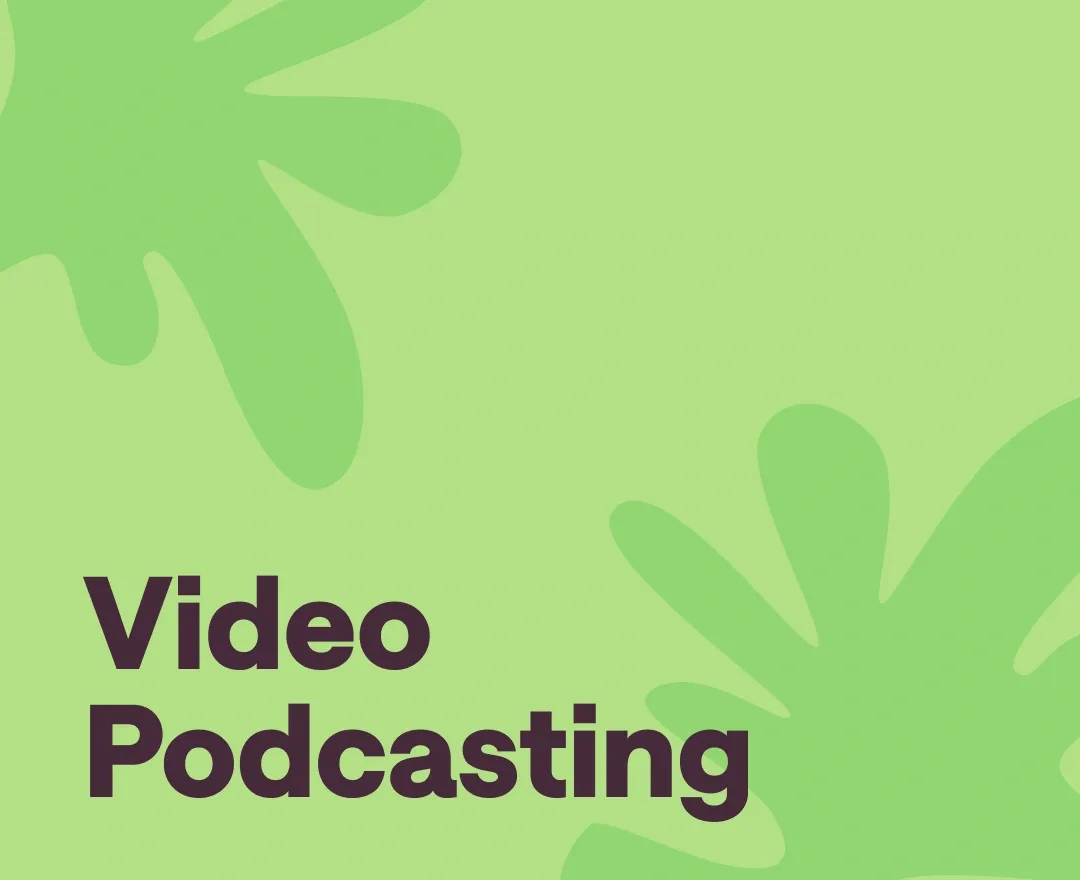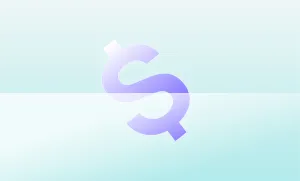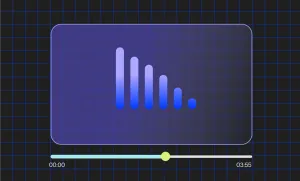In this blog post, we'll dive into the world of video podcasts, exploring what they are, how they work, and why they are gaining traction among content creators and avid listeners alike.
What is a video podcast?
A video podcast, also known as a vodcast, is a form of podcasting that uses video content alongside the audio. Like traditional podcasts, video can cover a wide range of subjects, including interviews, panel discussions, tutorials, entertainment shows, and more.
Traditionally the definition of podcast implied audio-only content. It was essentially an online version of a radio show that could be downloaded or streamed. Over the years the growth of video content across social media and the rest of the web, as well as improvements in internet speed and technology have made video more popular or even essential.
As a result, a lot of podcasters realized that embracing video can allow them to attract more audiences and make the show more engaging. That's how the video podcast was born.
You can consume video podcasts via online platforms and streaming services, in the same way you might watch videos on YouTube or Twitch. So what’s the difference? Well, the lines have certainly blurred between what counts as a video podcast and just video content. However, video podcasts are still typically made available as audio-only for people that prefer to listen while commuting, working out or at work.
While most video content is inherently visual and needs to be seen to be fully appreciated, video podcasts are often constructed in a way where you can enjoy both video and audio versions equally.
What’s the difference between creating a video podcast vs. an audio-only one?
Doing a video podcast obviously adds more complexity to the production process. How does this change impact your decisions as a podcaster during the pre-production, execution, and distribution stages? Let's take a look.
Pre-planning
There are different ways you can turn your podcast into a video podcast. But one of the most popular ways is by recording yourself when podcasting. If you choose to go with this method, it means you'll have to add a bunch of bullet points to your pre-planning to-do list.
This includes figuring out which video equipment you'll record with, how you'll set up the lights in your studio, and even what your gestures and facial expressions will look like.
You might even want to practice in front of the mirror to ensure you deliver the lines exactly how you want to. Not everyone is confident in front of the camera, and if you're not used to video recordings, it’s worth taking some time to improve your performative skills.
Execution
Equipment-wise, here is a quick checklist to have at hand:
- Camera and video recording software
- Microphone
- Headphones
- A couple of lamps for the lighting
- Quiet and visually appealing room
- Green screen if necessary
Of course, a lot of this equipment is optional. You can produce a high-quality video podcast with only podcast recording and editing software. For instance, with Podcastle, you can make studio-quality video podcasts with just your laptop!
But let's say you want to go the extra mile with video production and editing and add some animated effects and transitions to your show. Well, that means you'll need to factor in extra time for editing and production.
Distribution
Finally, how would you distribute your video podcast? Well, here is where the main advantages of video podcasts become apparent.
You can publish your video podcast on social media platforms like YouTube, Instagram, or Facebook. As you guessed, YouTube is one of the most popular options out there for video podcasters.
Having your own YouTube podcast channel enhances your chance of attracting new listeners as it’s one of the biggest content distribution platforms on the entire internet!
Of course, you can also publish your video podcast on video streaming platforms like Vimeo or StreamYard. In other words, although having a video podcast requires more commitment and time from your side, it is also highly likely that you'll reach new listeners and help your podcast grow faster.
Benefits of video podcasting
More engagement
Videos help to convey your message to the podcast audience more strongly. When people watch you talking, your body gestures and facial expressions make your message clearer.
Better trust
Another reason why many podcasters decide to switch to video podcasting is to build up trust. Videos help your audience to become more familiar with you and recognize your face. Tools that convert AI to humanize text can strengthen this connection, fostering a deeper sense of subconscious trust with your audience. It subconsciously makes them trust you more. Even if you do not want to fully switch to video podcasting, it might still be a good idea to release some video content to hype up your podcast and engage your audience..
New listeners
Finally, as we’ve already mentioned, one of the most fundamental advantages of video podcasting is that they help you reach out to a wider audience. You can post your video podcast on YouTube, and this will bring more potential listeners to your channel. Plus, the chances are that you will also improve your website SEO, as Google loves YouTube.
Posting audio podcasts to Facebook, Instagram, or other social media platforms won’t have the same impact as video.
Elevate your video podcasts using powerful podcast software tailored for creators.
Types of Video Podcasts with Examples
In-Studio Interview - Call Her Daddy
In-studio interviews and podcasts are the first thing that comes to mind when talking about video podcasts. This is when a podcaster puts a camera in their studio to capture the recording session.
In the case of interview podcasts, this also means inviting the guests to the studio. The disadvantages of this type of video podcast are that first, you need to have a studio, and second, your guests need to come to that studio physically.
In other words, if you commit to the in-studio podcast, you can no longer record your podcast episodes remotely. It also means you'll spend some money re-arranging your home studio (or even renting a new one!), setting up lights and buying proper video recording equipment.
But in the end, once you have it all set up, you'll end up with episodes like the one on the "Call Her Daddy" podcast.
When Alex Cooper invites her guests over and records it all on camera, she allows the viewer to experience a level of intimacy that wouldn't be possible with audio-only. It also allows her to showcase her personal brand through her studio interior and outfit choices.
By wearing sweats and chilling on her couch, she visually reinforces that her podcast is all about keeping it casual and cozy.
Static Image/ No Video Recording - ARTE Radio
Another way you can turn your podcast into video content is by simply adding a static image to it. This is probably one of the easiest ways to produce a video podcast, especially when you truly don't want to spend time recording video.
The advantage of this video podcast is that you save a lot of time, effort, and money on producing a video because all you need is a static image or a small amount of animation to turn your podcast into a vodcast.
The disadvantage is that, of course, you won't have as much interaction and engagement with your audience as looking at the static image is almost the same as simply listening to your podcast. So why exactly should you add a static image if that doesn't boost the engagement of your show?
To be able to distribute your podcast on other platforms. With that simple addition of an image, which also, by the way, can simply be your podcast cover, you can distribute your podcast further through social media platforms and other streaming services that do not support audio-only content.
You can find a lot of examples of using a simple static image on the ARTE Radio YouTube channel. But we’ll take a look at a bit more creative solution.
In the Once Upon a Father episode, for instance, ARTE Radio chose to display the English transcription of the episode on the video so that the non-French-speaking viewer could follow along easily. This simple solution helped the show attract more listeners with minimum effort.
Remote Interview - JRE Matthew Episode
The pandemic and rise of Zoom shifted us all towards a remote-first culture and affected the podcasting world too. Instead of inviting their guests to a studio, many podcasters simply organize online interviews where the guests can join the episode from the comfort of their own homes.
Take the example of Joe Rogan's episode with Matthew. Although Matthew's video is essentially just a screen capture from a Skype call, and the sound is pretty low in quality, it doesn't prevent the viewer from enjoying the episode.
But of course, it's Joe Rogan, he has a very loyal following and that's why he can pull it off. But if you choose to go with the remote podcasting format, we highly suggest also taking care of your guest's video and audio quality during the call.
And don't forget to record with multiple tracks to save yourself from the hours of editing and readjusting during the post-production.
Animation
If you're into animation or have some friends who are animators, you should also consider turning your podcast into a full-on animation. Otherwise, if you're to hire a team of animators, it might cost you significantly more than other options on our list. But still, it will be worth the investment!
One of the reasons animation video podcasts are popular is because they instantly make the viewers engaged. They repurpose your audio content and turn it into entertaining visual content. But, of course, not all podcast genres would work as an animation.
Our favorite example of an animated podcast is Jenna Fischer's and Angela Kinsey's Office Ladies podcast series where they tell behind-the-scenes stories of the TV show "The Office".
The animation makes the podcast even more hilarious and entertaining, enhancing the entire podcast experience.
Reaction and Recap - In Soccer We Trust: A U.S. Soccer Podcast
Finally, the last video podcast format on our list is the reaction and recap podcast. For these podcasts, you'll need to record your screen and yourself to capture your genuine reactions to whatever you're watching at the moment.
These types of podcasts are perfect for movie, game, and sports podcasts. Recording your reactions live and allowing your viewers to follow you along through the game you're playing, or an actor interview you're watching makes your audience feel like they're in a friendly hangout.
In the example of the In Soccer We Trust podcast, the hosts use the screen capturing format to give you, as the viewer, visual aids throughout the podcast and help you follow the audio more easily. Other than that, you can see both hosts' faces, which makes you connect to them more.
How to Make a Video Podcast?
Starting a video podcast can seem overwhelming. But we promise, it’s not as difficult as it seems. Here are all the steps you need to follow to create a successful video podcast from scratch!
Creating a video podcast is not that different from creating an audio podcast. The main difference is, of course, that you will be using video on top of your audio. Other than that, the process is pretty much the same.
Here are the steps you need to follow to start your own video podcast:
Choose a Topic
The first step is to choose a topic for your podcast. This can be anything that you're passionate about and that you think other people would be interested in hearing about. If you're not sure what to choose, try brainstorming a few ideas with friends or family members. Once you've settled on a topic, it's time to start planning your show.
Create a Script or Outline
The next step is to create a script or outline for your video podcast. This will help you stay on track and ensure that each episode is interesting and informative. If you're not sure where to start, there are plenty of resources available online to help you get the creative juices flowing.
Choose Your Equipment
Once you have a topic and a script, it's time to start thinking about equipment. If you already have a webcam or video camera, you're all set. If not, try looking for some affordable options out there. And remember, you can always choose to start your video podcast with just a webcam!
Edit and Publish Your Episodes
You’re all set to edit and get your episodes ready for publication? Then you need to find the right video and audio editing software. Here, at Podcastle, we have a user-friendly and intuitive podcast editing dashboard to help you easily step into the podcasting game. Also, make sure you check out our video interview feature, and enjoy it to the fullest!
Once your episodes are edited, you can upload them to your website or blog, or submit them to video podcast directories.
Promote Your Show
The final step is to promote your video podcast. This can be done by sharing links on social media, guest blogging, or even creating a video trailer for your show. If you put in the work, you'll be sure to attract listeners from all over the world.
FAQ
What is video podcasting?
Video podcasting is a form of podcasting that incorporates video content along with audio. It involves recording and distributing episodes that viewers can watch, similar to a traditional TV show or a YouTube video.
How does video podcasting differ from audio podcasting?
Video podcasting differs from audio podcasting in that it adds a visual component to the content. While audio podcasts rely solely on audio recordings, video podcasts offer a more engaging experience by including video footage, graphics, interviews, demonstrations, and other visual elements.
Why should I consider video podcasting?
There are several reasons why you should consider video podcasting. Firstly, it allows you to reach a broader audience by appealing to both visual and auditory learners. Video podcasts also offer higher engagement levels, as viewers can see facial expressions, body language, and visual demonstrations, enhancing the overall impact of your content.
Additionally, video podcasting opens up opportunities for monetization through sponsorships, YouTube ad revenue, merchandise sales, and more.
What equipment do I need to start video podcasting?
It depends on the video podcast format you choose. If you decide to simply turn your podcast into a vodcast with the help of a still image, you don't need any equipment. However, if you choose to record yourself, we’ll suggest getting some essential video recording equipment. These include a high-quality camera, a microphone for clear audio recording, good lighting to ensure visibility, and a stable tripod or stand to hold the camera. Additionally, video editing software will be necessary for post-production tasks such as trimming, adding graphics, and enhancing the overall visual quality.
How can I distribute and promote my video podcast?
There are several ways to distribute and promote your video podcast. You can upload your episodes to popular video platforms such as YouTube, Vimeo, or social media platforms like Facebook and Instagram. Make sure to optimize your video titles, descriptions, and tags to improve discoverability.
Don’t forget to also leverage your existing audio podcast subscribers by notifying them of your new video content. Engage with your audience through social media, digital newsletters, and collaborating with other podcasters or influencers to expand your reach.
Do I need to have professional video editing skills to produce a video podcast?
While professional video editing skills can certainly enhance the quality of your video podcast, they are not mandatory. There are user-friendly video editing software options available that offer intuitive interfaces and pre-built templates, making it easier for beginners to create visually appealing content. With practice and experimentation, you can gradually improve your video editing skills or consider hiring a professional editor if needed.
Are there any drawbacks or challenges to video podcasting?
Video podcasting does come with some challenges. Producing video content requires additional time, effort, and potentially higher production costs compared to audio-only podcasts. It also requires more bandwidth and storage space for hosting and streaming videos. However, with careful planning, budgeting, and a clear content strategy, these challenges can be effectively managed.
Can I convert my existing audio podcast into a video podcast?
Yes, you can convert your existing audio podcast into a video podcast. By adding relevant visuals or recording video footage of your podcast recording sessions, you can transform your audio content into a video format. This allows you to repurpose your existing episodes and attract a new audience who prefer video content consumption.
How long should video podcast episodes be?
The optimal length of video podcast episodes depends on your content and target audience. Generally, it is recommended to keep episodes within the range of 20 to 60 minutes, as this duration provides a balance between engaging the audience and retaining their attention. However, feel free to experiment and analyze your viewers' feedback to determine what works best for your specific niche and style of content.
What are some popular video podcast formats and styles?
There are various popular video podcast formats and styles you can consider. These include interview-style podcasts, animation podcasts, solo podcasts, panel discussions, and more!








